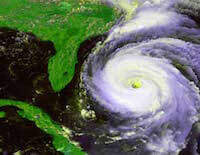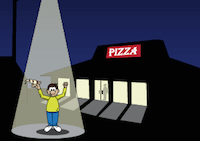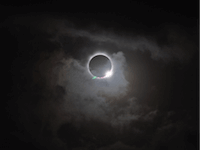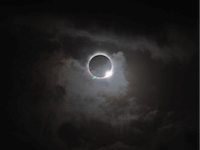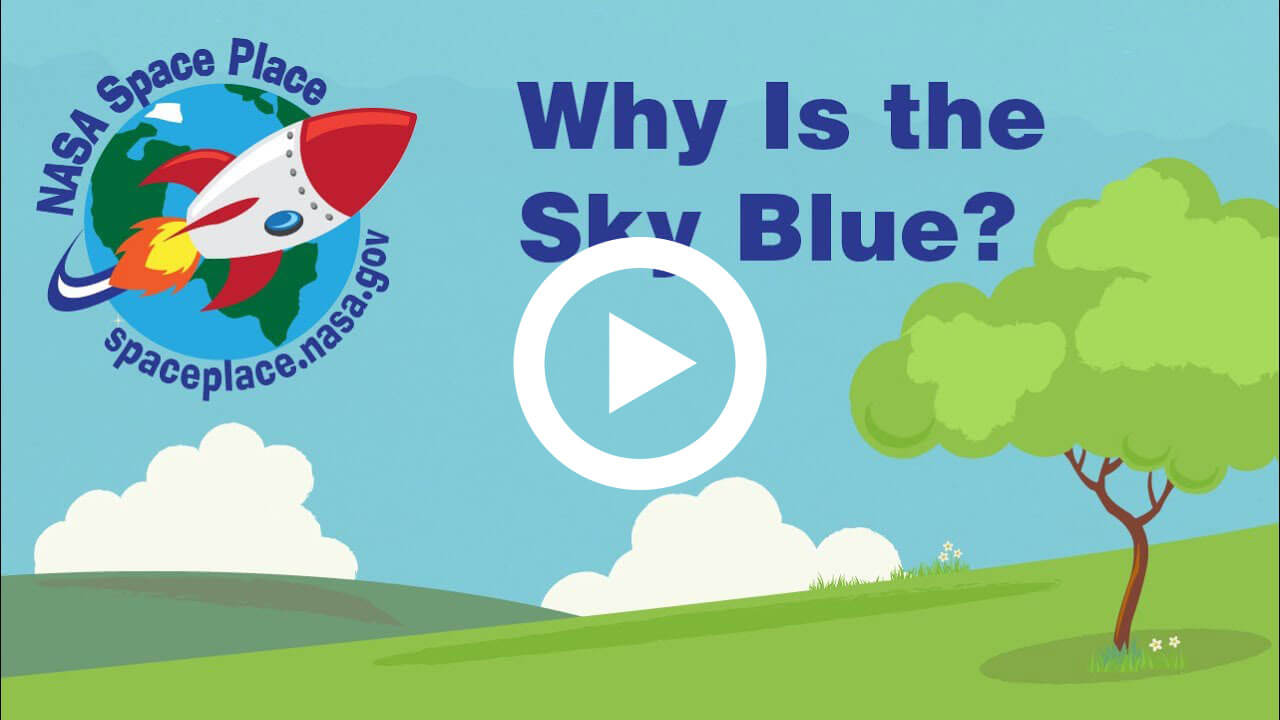
Click above to watch this video about why the sky is blue! Voiceover provided by NASA scientist Dr. Moogega Stricker. Click here to download this video (1920x1080, 87 MB, video/mp4).
It's easy to see that the sky is blue. Have you ever wondered why?
A lot of other smart people have, too. And it took a long time to figure it out!

The light from the Sun looks white. But it is really made up of all the colors of the rainbow.
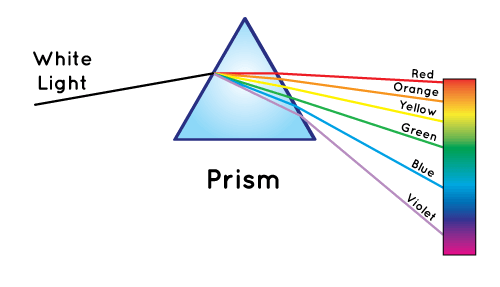
When white light shines through a prism, the light is separated into all its colors. A prism is a specially shaped crystal.
If you visited The Land of the Magic Windows, you learned that the light you see is just one tiny bit of all the kinds of light energy beaming around the universe--and around you!
Like energy passing through the ocean, light energy travels in waves, too. Some light travels in short, "choppy" waves. Other light travels in long, lazy waves. Blue light waves are shorter than red light waves.
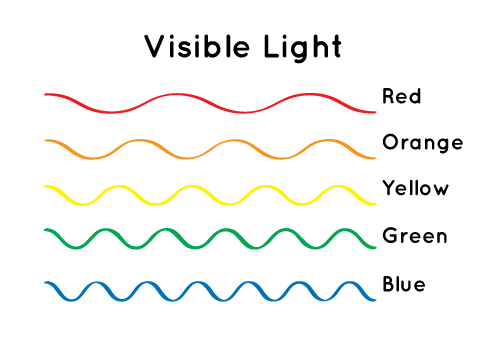
All light travels in a straight line unless something gets in the way and does one of these things:—
-
reflect it (like a mirror)
-
bend it (like a prism)
-
or scatter it (like molecules of the gases in the atmosphere)
Sunlight reaches Earth's atmosphere and is scattered in all directions by all the gases and particles in the air. Blue light is scattered in all directions by the tiny molecules of air in Earth's atmosphere. Blue is scattered more than other colors because it travels as shorter, smaller waves. This is why we see a blue sky most of the time.
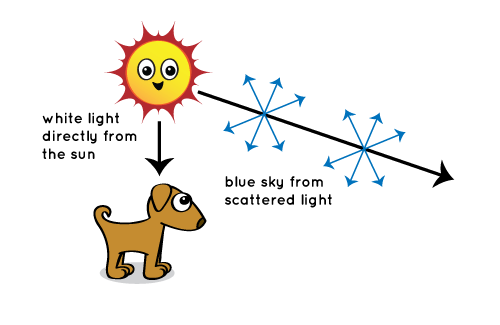
Closer to the horizon, the sky fades to a lighter blue or white. The sunlight reaching us from low in the sky has passed through even more air than the sunlight reaching us from overhead. As the sunlight has passed through all this air, the air molecules have scattered and rescattered the blue light many times in many directions.
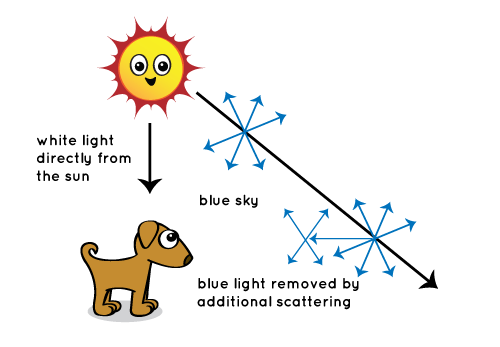
Also, the surface of Earth has reflected and scattered the light. All this scattering mixes the colors together again so we see more white and less blue.
What makes a red sunset?
As the Sun gets lower in the sky, its light is passing through more of the atmosphere to reach you. Even more of the blue light is scattered, allowing the reds and yellows to pass straight through to your eyes.
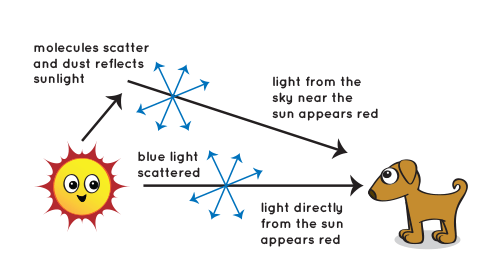
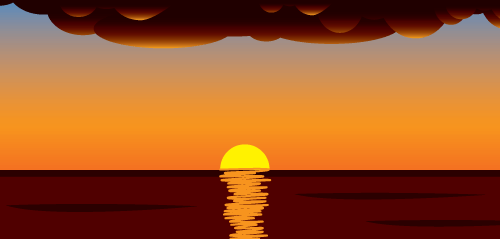
Sometimes the whole western sky seems to glow. The sky appears red because small particles of dust, pollution, or other aerosols also scatter blue light, leaving more purely red and yellow light to go through the atmosphere.
Is the sky blue on other planets, too?
It all depends on what’s in the atmosphere! For example, Mars has a very thin atmosphere made mostly of carbon dioxide and filled with fine dust particles. These fine particles scatter light differently than the gases and particles in Earth’s atmosphere.
Photos from NASA’s rovers and landers on Mars have shown us that at sunset there is actually the opposite of what you’d experience on Earth. During the daytime, the Martian sky takes on an orange or reddish color. But as the Sun sets, the sky around the Sun begins to take on a blue-gray tone.


The top image shows the orange-colored Martian sky during the daytime and the bottom image shows the blue-tinted sky at sunset. Both images were captured by NASA’s Mars Pathfinder Lander. Credit: NASA/JPL



